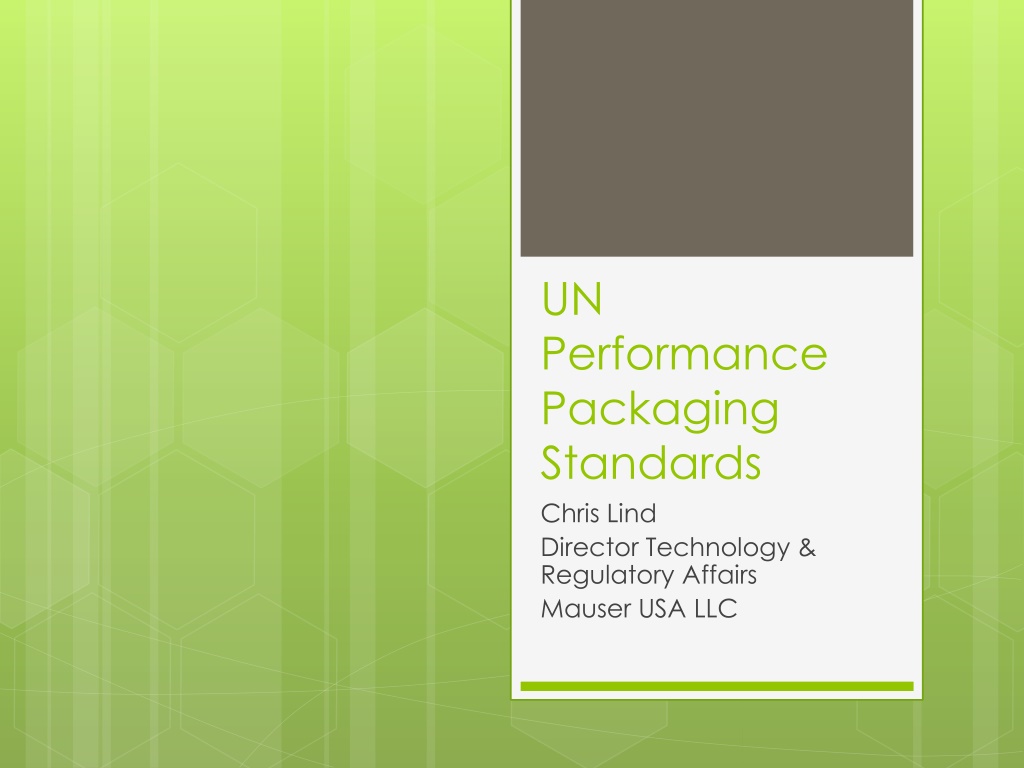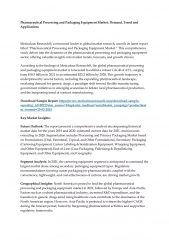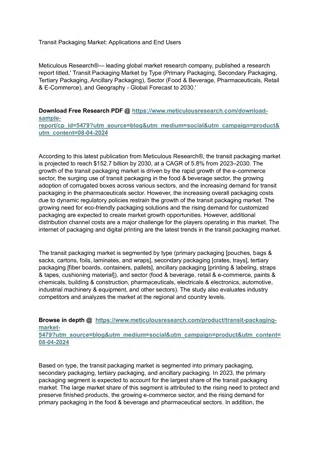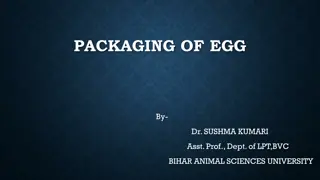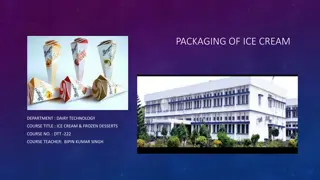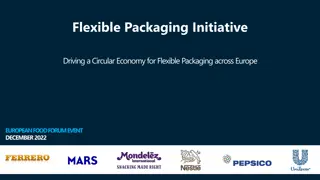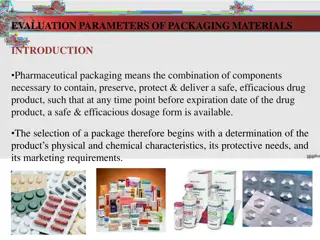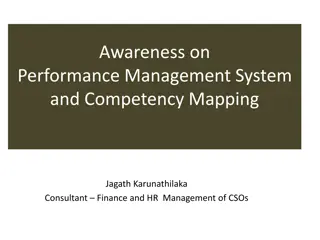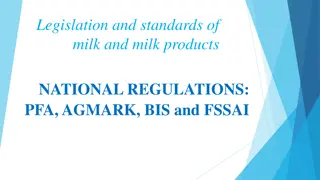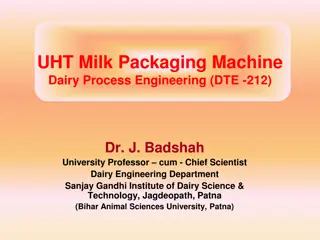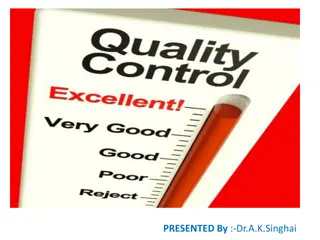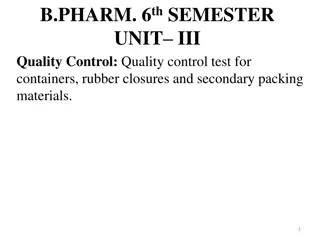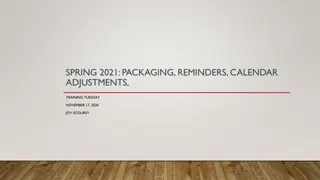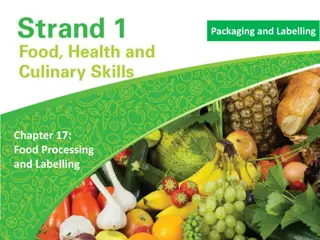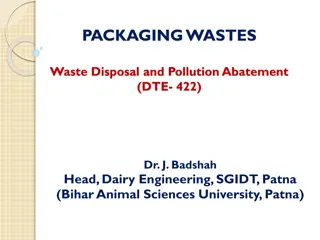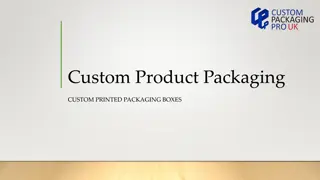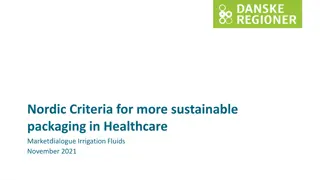UN Performance Packaging Standards Overview
Packaging standards evolved over time with a shift towards performance-oriented regulations to ensure specific attributes. The UN subcommittee oversees regulations, defining design requirements and testing procedures for hazardous materials transportation.
Download Presentation

Please find below an Image/Link to download the presentation.
The content on the website is provided AS IS for your information and personal use only. It may not be sold, licensed, or shared on other websites without obtaining consent from the author. Download presentation by click this link. If you encounter any issues during the download, it is possible that the publisher has removed the file from their server.
E N D
Presentation Transcript
UN Performance Packaging Standards Chris Lind Director Technology & Regulatory Affairs Mauser USA LLC
Quick History Packagings used to be specification based the government told us packing manufacturers what the drums, etc. should look like and how they should be constructed In the 1990s the US DOT harmonized with the UN Model Regulations and went to Performance Oriented Packaging (POP), meaning they had to have specific performance attributes
UN Subcommittee of Experts on the Transport of Dangerous Goods 29 voting countries 5 Non-voting observer countries 35 Non-Governmental Organizations, Consultative Organizations etc. 5 are international packaging groups (ICPP, ICIBCA, ICCR, ICDM, & IFDI) Chemicals are represented by CEFIC and ICCA Non-voting participants can present both INFormal papers and Working Papers for consideration by the voting members and participate in discussion
UN Model Regulations & US DOT Regulations Define what is a design and require Design Qualification tests on all new designs, including remanufactured IBCs Requirements for recertification of design USA yearly Canada every other year Europe none. Once a DQ is certified they re done
Regulations Establish Hazard Classes & Packing Groups Hazard Classes Explosive Compressed gas Flammable liquid Flammable Solid Oxidizer Poison/Infectious Substance Radioactive Corrosive Miscellaneous Packing Groups PG I Extreme Hazard PGII Major Hazard PGIII Minor Hazard 1. 2. 3. 4. 5. 6. 7. 8. 9.
Regulations Establish Testing Procedures Vibration test one hour vibration at 1.6 mm lift Bottom Lift Two lifts each way with 1.25 x permissible mass Stack Tests 24 hour Leak Proofness 5 minutes at 20 kPa PG II & PG III Every bottle in production must be leak tested at 20 kPa for PG II & PG III Hydrostatic Pressure IBCs require 10 minutes at 100 kPa in EU; can be less in US & Canada Drop Test 0.67-1.2 meters with IBC at -18 C for PG III compliance
Other DOT Regulatory Requirements Training Quality System Security Training Security Plan Load Securement All modal regulations require that the load be secured from movement in every direction
8 31HA1/Y/mm-yr/USA/M#/3800/2038/1041/57/100/mm-yr mm-yr/ UN Symbol CODE (49 CFR 178.702(a)) Referenced in law as 31HZ1 Packing Group Y or Z. (X (PG I) not allowed by law in 31HZ1 IBC) Month and Year of manufacture Country authorizing mark Manufacturer # or 3rd Party Lab# or other registered symbol Stacking load in kg Maximum permissible gross mass in kg Rated capacity in L at 20 degrees C Tare mass Gauge test pressure in kPa Date of last leakproofness test Date of last inspection Bottle must have code, M#, date of manufacture and country authorizing mark Finished unit also must have sticker with maximum allowable top load in transit 31HA1/31HG1/M4118/06 09/USA 1. 2. 1. 3. 4. 5. 6. 7. 8. 9. 10. 11. 12. 13. 14. 15.
What makes an IBC meet the RPCL? Packing Group III compliance Y or Z on the UN Mark Meets the testing requirements for PGIII Tamper Evidence Valve handle Foil Seal on valve Cap One way or check valve There are no requirements at this time regarding how much back pressure this check should handle. Unique Serial Number or other traceability system/device There is no such thing as a UN rated single use or one-way IBC. To reuse/refill or not is the choice of the user, not the government, as long as it meets the legal requirements.
Refill versus New IBCs The totals of the 2011 numbers received are the following: New Composite IBCs (all sizes combined) 2,574,513 New IBC Bottles (all sizes combined) 860,296 The totals of the 2010 numbers received are the following: New Composite IBCs (all sizes combined) 2,107,425 New IBC Bottles (all sizes combined) 650,484 Reconditioned, Repaired and Remanufactured units not included as one IBC can make several trips per year.
Market studies lump all agricultural products together Does not include demand for reconditioned, repaired or remanufactured units Does not reflect manufacturers market concentrations Some vendors are heavier into ag chemicals than others Does not reflect composite IBCs versus asset tanks or metal IBCs Reporting may not be as accurate as one might think These studies are supposed to be blind but do reporting entities over or under report Bottom line is that despite inherent inaccuracies a substantial number of IBCs are sold for pesticides and are refilled many times
